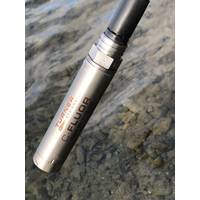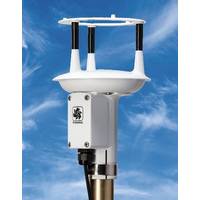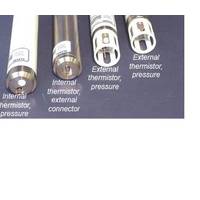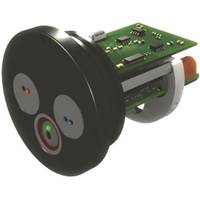
Turner Designs C-FLUOR Probes Offer Digital Output
C-FLUOR probes are sensitive single-wavelength in situ fluorescence and turbidity instruments that are now available with a Digital Output option. ASCII data can be polled every 0.5 seconds or streamed at variable rates as fast as 16 readings per second. Combining a maximum requirement of 22mA current draw at 12VDC input with a T99 of less than 0.6 seconds, Digital C-FLUOR probes require very low levels of power. Factory-calibrated, each C-FLUOR ships with a calibration certificate that specifies the calibrated range and minimum limit of detection as fluorophore concentrations. Titanium

New OEM Temperature Sensors from S9
screw-on probe guard. Both are available with wire leads or solder connections. The serial interface can be either RS-232 or 3.3V logic level. The sampling interval is user programmable and sampling starts automatically when the sensor is powered. Temperature data in degrees C are output in ASCII characters (ex. tt.tttt) Range: - 5 to +45°C Accuracy: ± 0.005°C (-2 to +35°C) Stability: 0.00025°C/month Resolution: 0.0001°C Time constant: less than 1 second Supply Voltage: 5 – 28 VDC Current consumption: 10 mA

Young Debuts New Ultrasonic Anemometer
The R. M. Young Company has introduced the ResponseONE Ultrasonic Anemometer. The ResponseONE Ultrasonic Anemometer (Model 91000) is fully wind tunnel tested and calibrated to provide accurate wind measurement over an operating range of up to 70 meters/second (156 mph). Wind speed and direction data is provided at up to 10 updates per second and made available via a variety of standard serial output formats including SDI-12, NMEA, RMYT and ASCII text. According to the manufacturer, the sensor features durable, weather proof construction and low power consumption.

SBE Launches SBE 39-Plus
battery pack and non-volatile memory for deployment at depths up to 10,500 meters. The 39plus is intended for moorings or other long-term, fixed-site applications, as well as deployments on nets, towed vehicles, or ROVs. Calibration coefficients are stored in EEPROM, allowing output in decimal or XML ASCII engineering units ((°C/°F and decibars or psi). The thermistor, the same sensor used in the SBE16plus V2 SeaCAT and 37 MicroCAT, has a long history of exceptional accuracy and stability; drift is typically less than 0.002 °C/year. Summary: Next generation

Cyclops Fluorometers for AUVs, Gliders & Floats
Integrator electronics can be fastened to an optical head defined by the customer and ready for integration. Alternately, customers can purchase the Cyclops Integrator with sensors in one of the pre-defined Turner Designs optical head configurations. Data integration is reported to be simple with ASCII data automatically delivered at 1 second intervals only 3 seconds after power is applied. Standard optical kits are available for detecting: in vivo Chlorophyll, Crude Oil, Refined Fuels, CDOM/FDOM (dissolved organic material), Blue/Green Algae, Fluorescein Dye, Rhodamine Dye, PTSA Dye, Optical



 February 2024
February 2024





